The Iraq War is now considered a closed chapter in U.S. history but the true lessons are only now beginning to be drawn. Many books focus on the actions of generals, colonels, and other higher ranking officers who directed the war from the upper echelons. A gratifying number focus on the war at ground level, showing the efforts of enlisted soldiers and junior officers fighting the war at a face-to-face level. Fallujah Awakens: Marines, Sheikhs, and the Battle Against Al Qaeda (Bill Ardolino, Naval Institute Press, Annapolis, MD, 2013, 320 pp., photographs, maps, and index, $36.95, hardcover) shows the war as experienced by a company of Marine reservists assigned to an area just outside the infamous “City of Mosques,” as Fallujah is known.
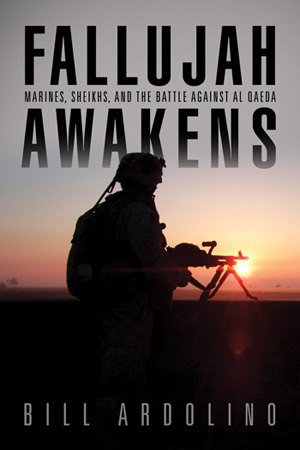 Arriving in Iraq in late 2006, Company A 1/24 Marines was posted on the Fallujah peninsula, southeast of the city proper. Two battles years earlier had made the town famous as a hotbed of insurgent activity. Cooperation between U.S. forces and Iraqis was practically nonexistent and insurgents fought the Marines and terrorized civilians alike. Roadside bombs and sniper attacks were commonplace. Initially the Marines had little hope of making significant change in their area of responsibility.
Arriving in Iraq in late 2006, Company A 1/24 Marines was posted on the Fallujah peninsula, southeast of the city proper. Two battles years earlier had made the town famous as a hotbed of insurgent activity. Cooperation between U.S. forces and Iraqis was practically nonexistent and insurgents fought the Marines and terrorized civilians alike. Roadside bombs and sniper attacks were commonplace. Initially the Marines had little hope of making significant change in their area of responsibility.
That changed when Major Dan Whisnant, the company commander, was approached by a local sheikh who used the sobriquet “Dark.” The young Arab was tired of the violence and strife plaguing his tribe and determined to do something about it. Local Al Qaeda-affiliated groups were doing more than fighting the infidel invaders; they were spreading their own extremist ideology at gunpoint, never hesitating to use torture and murder to enforce their control. Dark had seen the turnaround in nearby Ramadi and wanted the same for his people, so he took a risk and approached the Americans. He asked to form local militias and begin taking back the peninsula from the insurgency.
It was a risk for the Marines; they would be arming Iraqis, some of whom has been resistance fighters earlier. Something had to be done, however, and they decided to take the risk. Over the coming months the men of A 1/24 would have to weave a careful path between cooperation and combat, as the enemy could still blend in with the local community, which was cautious in accepting the Marines as allies against the radicals.
Along the way there were firefights and sniper attacks alongside more peaceful efforts. The Marines conducted medical and veterinary missions, distributed food alongside their new ally, Dark, and slowly gained the trust of the locals. Eventually the effort started to pay off and the situation in the area began to improve. It was a difficult transition for the young Americans, who were trained as infantry. They had arrived months before ready for stiff combat. Now they had to play multiple roles: census taker, relief worker, and intelligence gatherer, to name a few. Some of the young Marines bristled at something they considered beyond their training. Others embraced it as a way to make meaningful progress. Many thought the unit’s status as reservists was a great help, since the part-time Marines were more able to adapt to civilian methods.
As the Iraqis turned away from the insurgency, the hardcore elements among them lashed out at the local civilians, considering them as unfaithful Muslims for cooperating with the Americans. This culminated with a vehicle-borne IED attack against Dark’s tribe where the bomb was used to disperse chlorine gas, causing mass casualties among the Iraqis. Ultimately, the attack failed to intimidate; rather, it galvanized resistance to Al Qaeda and other related groups. It was one more nail in the coffin of the insurgency in Fallujah.
The author adds extensive background information to the book, gained through a rigorous interview process. The Marines are covered in detail, adding human faces to figures clad in camouflage and body armor, covered in dust and grit. Likewise the Arab players are described in real terms showing them as real people, trapped in a combat zone and trying to survive and regain a measure of normalcy in their lives. Explanations of the cultural and social nuances of the Fallujans are interspersed through the book. Incorporated seamlessly into the narrative, this added data reveals the accomplishments of the Marines of A 1/24 as even more remarkable.
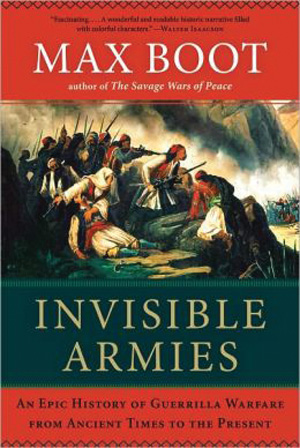 The guerrilla soldier is an object of both derision and worship, depending on your point of view. A nation that is born through the action of guerrillas and insurgents will, if it endures, find itself at some point fighting irregulars within its own borders or abroad as its power expands. This has been true for millennia, although our contemporary world often thinks of the guerrilla as a recent phenomenon. Max Boot’s Invisible Armies: An Epic History of Guerrilla Warfare from Ancient Times to the Present (Liveright Publishing, New York, NY, 2013, 750 pp., notes, maps, photographs, index, $35.00, hardcover) does the work of showing the influence of guerrilla fighters on the breadth of human history.
The guerrilla soldier is an object of both derision and worship, depending on your point of view. A nation that is born through the action of guerrillas and insurgents will, if it endures, find itself at some point fighting irregulars within its own borders or abroad as its power expands. This has been true for millennia, although our contemporary world often thinks of the guerrilla as a recent phenomenon. Max Boot’s Invisible Armies: An Epic History of Guerrilla Warfare from Ancient Times to the Present (Liveright Publishing, New York, NY, 2013, 750 pp., notes, maps, photographs, index, $35.00, hardcover) does the work of showing the influence of guerrilla fighters on the breadth of human history.
Beginning with antiquity, Boot shows the struggles of Rome against various barbarians, Xiongu nomads versus Han Chinese, and conflicts in Mesopotamia. Moving forward, the author goes into detail on dozens of insurgencies through time to include wars of empire, colonization, occupation and revolution. The effect of both religion and political belief on guerrilla warfare is well documented. The book ends with our current situation of the religious and racially based War on Terror and how modern governments and nations deal with it.
Attention is paid to people who figure prominently in the history of guerrillas, from familiar characters such as T.E. Lawrence and Vo Nguyen Giap to lesser known figures such as Edward Lansdale, a U.S. Army officer who became embroiled in the Huk rebellion in the Philippines after World War II and later went to Vietnam in the 1950s.
Across the latter half of the book the reader can begin to gain insight into the situation of the United States. The nation began through the effort of what was essentially a guerrilla movement; within a few decades the new country was itself fighting a guerrilla war against Native American tribes as it expanded westward. Once it went overseas, the United States fought insurgencies in the Philippines, used insurgent groups to help its efforts in World War II, and since then has fought against or aided guerrillas across the globe.
The vast, deep saga of guerrilla warfare could easily take a lifetime or more to study and comprehend. Max Boot, already well-known for The Savage Wars of Peace, his treatise on America’s minor conflicts, does a creditable job of giving the reader a broad overview of history’s most enduring warrior archetypes.
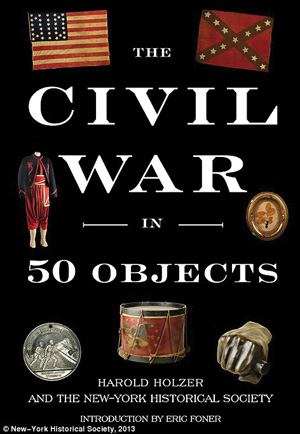 One recent trend in scholarly studies is to show a period of history through the tools, art, weapons, belongings, and clothing of those who lived in that period. The author takes each item in turn and explains exactly how it is historically significant. The Civil War in 50 Objects (Harold Holzer and the New York Historical Society, Viking Press, New York, NY, 2013, 380 pp., illustrations, index, $36.00, hardcover) brings this recent phenomenon to the study of the American Civil War.
One recent trend in scholarly studies is to show a period of history through the tools, art, weapons, belongings, and clothing of those who lived in that period. The author takes each item in turn and explains exactly how it is historically significant. The Civil War in 50 Objects (Harold Holzer and the New York Historical Society, Viking Press, New York, NY, 2013, 380 pp., illustrations, index, $36.00, hardcover) brings this recent phenomenon to the study of the American Civil War.
While many items are understandably predictable, from slave shackles, a John Brown pike, to period paintings and etchings, a number of the objects are unusual and unexpected. The Draft Wheel for New York City is shown along with its unfortunate history. Used to select those who had been drafted into military service under the Conscription Act passed by Congress in March 1863, this rotating barrel held the names of those liable for induction into the army. The first day of the draft, Saturday, July 11, went without incident. After a break for the Sabbath, the draft proceeding resumed on Monday, July 13. That day a riot broke out. It lasted four days and required Federal troops to quell the violence and looting that ensued.
Letters also are widely used in the book to show the attitudes and beliefs of soldiers, politicians, and civilians. The reader gains insight on what these people felt about the war, why they were joining in on the conflict, and who they were. The Civil War already is widely covered by personal diaries and papers due to the relatively high literacy rates among the various participants. It is a full field but this book adds nicely to the personal coverage of the war without being overly repetitive as some studies have become.
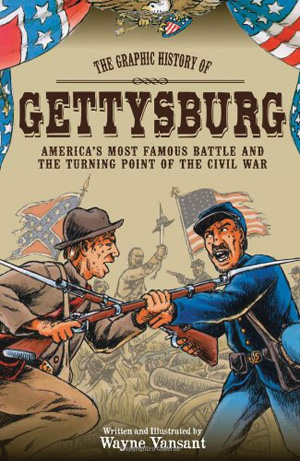 For a younger generation of readers, the graphic novel is a mainstay. For an older reader, it may seem no more than a thick comic book. However, some of those older readers also may recall reading the comic version of The Red Badge of Courage, courtesy of the long-gone Classics Illustrated series. For a young person not yet ready for the likes of Bruce Catton or Shelby Foote, such a comic provided an introduction, a way to kindle a budding interest.
For a younger generation of readers, the graphic novel is a mainstay. For an older reader, it may seem no more than a thick comic book. However, some of those older readers also may recall reading the comic version of The Red Badge of Courage, courtesy of the long-gone Classics Illustrated series. For a young person not yet ready for the likes of Bruce Catton or Shelby Foote, such a comic provided an introduction, a way to kindle a budding interest.
Now a new and factual telling of the Civil War’s greatest battle is available in graphic format. The Graphic History of Gettysburg: America’s Most Famous Battle and the Turning Point of the Civil War (Wayne Vansant, Zenith Press, Minneapolis, MN, 2013, 96 pp., illustrations, $19.99, softcover) literally draws a picture of the three days in July 1863 when the Confederacy lost its last chance for outright victory over the Union. Beginning with the death of Stonewall Jackson at Chancellorsville, the author/illustrator lays out the strategic position of the Confederacy and its need to win a decisive victory before national exhaustion set in.
The organizations of both sides are covered briefly before moving on to a retelling of the battle itself, starting with the opening moves and maneuvering of each army. The fight between Union Brig. Gen. John Buford’s cavalry and Confederate Maj. Gen. Henry Heth’s infantry is laid out in fair detail, and subsequent chapters are organized with the major events of each day through to the conclusion of the battle. Along the way the decisions and actions of famous generals are mixed with experiences of common soldiers, and even a few civilians’ tales are thrown in to round the experience.
The illustrations are clear and, while a small amount of bloodshed is depicted, it is limited and not too graphic. Overall the book is well written at a level perfect for an interested 12-14-year-old, though they may need to look up a term or two. Younger readers would benefit from reading this with a parent or grandparent who can explain where needed. This book’s greatest strength may be its ability to allow loved ones to share a few hours together.
 Osprey Publishing is well known for its technically detailed yet concise books on the weapons, soldiers, and campaigns of history’s greatest conflicts. Air Vanguard 7: USAF McDonnell Douglas F-4 Phantom II (Peter Davies, Osprey Publishing, Oxford, UK, 2013, 64 pp., photographs, illustrations, diagrams, index, $18.95, softcover) is an in-depth look at an iconic American fighter aircraft of the Cold War. In the normal format for Osprey books, the Phantom’s design history is laid out first, explaining the plane’s origins as a derivative of the U.S. Navy’s F3H Demon, overall a disappointment as a fighter. Further development and the addition of the now-famous J79 jet engine made the F4 a success, even to the extent the USAF wound up adopting it alongside the Navy, unusual at the time.
Osprey Publishing is well known for its technically detailed yet concise books on the weapons, soldiers, and campaigns of history’s greatest conflicts. Air Vanguard 7: USAF McDonnell Douglas F-4 Phantom II (Peter Davies, Osprey Publishing, Oxford, UK, 2013, 64 pp., photographs, illustrations, diagrams, index, $18.95, softcover) is an in-depth look at an iconic American fighter aircraft of the Cold War. In the normal format for Osprey books, the Phantom’s design history is laid out first, explaining the plane’s origins as a derivative of the U.S. Navy’s F3H Demon, overall a disappointment as a fighter. Further development and the addition of the now-famous J79 jet engine made the F4 a success, even to the extent the USAF wound up adopting it alongside the Navy, unusual at the time.
Entering service in 1962, the F4 quickly proved its worth. It could carry more ordnance than a World War II B-17 bomber and was easily adapted to specialty roles such as reconnaissance and a later anti-air defense platform, the F4G Wild Weasel. The aircraft was sent to Vietnam where its initial lack of integral cannon was discovered to be a detriment. Gun pods were added before an M61 20mm Vulcan gun was fitted in the F4E. The plane later went into service with air forces around the world, many staying in service well into the first decade of the 21st century. It is believed a few still fly with the Iranian Air Force today.
The technical data included in this volume is of such detail readers without in-depth knowledge of aircraft may find some of it difficult to understand. The operational history section covers the Phantom’s USAF service as well as others and highlights the combat this fighter has seen in Southeast Asia and the Middle East. Throughout the book are numerous photographs and a number of detailed illustrations showing different paint schemes and action shots of F4s in combat situations over Vietnam and Israel. Many of these are intended to aid model builders, a community Osprey caters to.
For those who love delving into the history of favorite weapons, the Osprey series is hard to beat, and there are many other aircraft-related titles in their series.
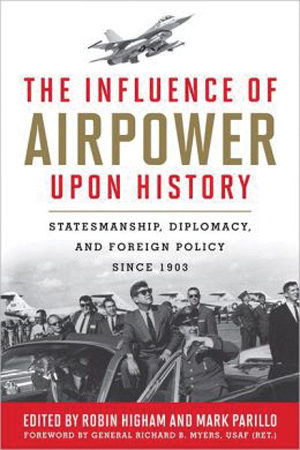 From a historical viewpoint, military aviation is a new development, but a mere century old. During that hundred-year span, however, air power has rightfully staked a claim as a critical component of military power. Nations that can afford an up-to-date air force are able to dominate those that can’t. Supremacy in the air is now such a serious threat it can spur local arms races or be used to intimidate an opponent into concessions without a shot being fired or a bomb dropped. From the first bombers and zeppelins to contemporary stealth aircraft, the threat of air attack has been used as an instrument of national policy.
From a historical viewpoint, military aviation is a new development, but a mere century old. During that hundred-year span, however, air power has rightfully staked a claim as a critical component of military power. Nations that can afford an up-to-date air force are able to dominate those that can’t. Supremacy in the air is now such a serious threat it can spur local arms races or be used to intimidate an opponent into concessions without a shot being fired or a bomb dropped. From the first bombers and zeppelins to contemporary stealth aircraft, the threat of air attack has been used as an instrument of national policy.
The Influence of Airpower Upon History: Statesmanship, Diplomacy and Foreign Policy Since 1903 (Edited by Robin Higham and Mark Parillo, University Press of Kentucky, Lexington, 2013, 317 pp., photographs, index, $40.00, hardcover) relates the rise of airpower to its use both in warfare and international relations through a series of nine essays, each tackling a unique facet of airpower’s development and employment.
The first several essays concentrate on the early days of aviation through the beginning of World War II. During this time considerable discussion occurred over what exactly these new airplanes meant for the world. In England, for example, many realized aircraft represented the first realistic threat of attack on the home islands in a century. At the same time, the potential for aircraft to ease the problems of policing a world empire was not lost upon them, nor was it lost upon the Italians or French. Simultaneously, theorizing about the primacy of bombers and the ability of fighter defenses to stop them abounded. Meanwhile, the Nazi used the threat of their resurgent air force to bluff their would-be opponents into inaction through the 1930s.
Aerial arms races are thoroughly discussed in a number of the essays, including an interesting treatise on South America. Prohibited by U.S. policy to acquire modern jets after World War II, these countries eventually turned to Europe and the Soviet Union for aircraft some arguably didn’t need. In time, the United States lifted its ban in order to get in on sales in this market.
Focusing in on the United States, later essays cover how successive presidents have used American airpower to support policy objectives, in particular the now-ubiquitous carrier battle group. The book lives up to its title, giving a detailed big-picture overview of military aviation’s first century of existence.
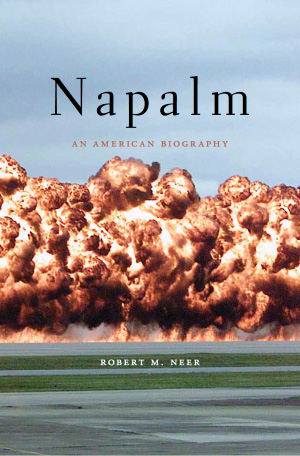 On July 4, 1942, a group of maintenance workers at Harvard University dug a wide, shallow hole near the campus tennis courts and filled it with water. Professor Louis Feiser arrived with his assistants and set up a new device in the center of this pool. Wires were run to an actuator device outside the water-filled area. Feiser pushed a switch and a large explosion of white phosphorous and jellied gasoline rent the air, flames and smoke spreading over the otherwise idyllic summer scene. Startled tennis players ran for cover as lab assistants ran into the pool, gathered globs of residue and put them in buckets.
On July 4, 1942, a group of maintenance workers at Harvard University dug a wide, shallow hole near the campus tennis courts and filled it with water. Professor Louis Feiser arrived with his assistants and set up a new device in the center of this pool. Wires were run to an actuator device outside the water-filled area. Feiser pushed a switch and a large explosion of white phosphorous and jellied gasoline rent the air, flames and smoke spreading over the otherwise idyllic summer scene. Startled tennis players ran for cover as lab assistants ran into the pool, gathered globs of residue and put them in buckets.
Napalm was born that day, and what would begin as a new weapon in the fight against fascism and tyranny in World War II would eventually become a hated and feared symbol of the horror and devastation of modern war. Napalm: An American Biography (Robert M. Neer, Belknap/Harvard University Press, Cambridge, MA, 2013, 310 pp., photographs, notes, index, $29.95, hardcover) delves into this famous weapon.
Early in World War II, the National Defense Research Committee began looking at hundreds of weapons projects that could help win the war. Napalm was one of its first success stories. Soon it found a place in the American arsenal, devastating 64 Japanese cities while the atomic bomb got the credit. Used from then on, in Vietnam news coverage of burned and mutilated civilians gave the incendiary the horrid reputation it now conjures in the minds of the public.
 The role of the German mercenary regiments in the American Revolution is well documented. These soldiers, largely from the Hesse region and now known collectively as the Hessians, were often conscripts and formed a substantial portion of the British Army. Thousand were captured and made prisoners of war and their story is told in A Generous and Merciful Enemy: Life for German Prisoners of War during the American Revolution (Daniel Krebs, University of Oklahoma Press, Norman OK, 2013, 392 pp., maps, illustrations, notes, index, $34.95, hardcover).
The role of the German mercenary regiments in the American Revolution is well documented. These soldiers, largely from the Hesse region and now known collectively as the Hessians, were often conscripts and formed a substantial portion of the British Army. Thousand were captured and made prisoners of war and their story is told in A Generous and Merciful Enemy: Life for German Prisoners of War during the American Revolution (Daniel Krebs, University of Oklahoma Press, Norman OK, 2013, 392 pp., maps, illustrations, notes, index, $34.95, hardcover).
The author covers the topic in broad strokes, starting with how the Hessians were recruited and the subsidy treaties between England and the various German princes who provided troops. An overview of how armies took and treated prisoners of war during this period of history is informative. The coverage of the prisoners’ treatment and use as economic and propaganda tools is detailed and sheds light on a little covered topic of the Revolutionary War. An overview of the cultural changes of the era and how that affected the taking and treatment of prisoners also provides valuable insight.
Short Bursts
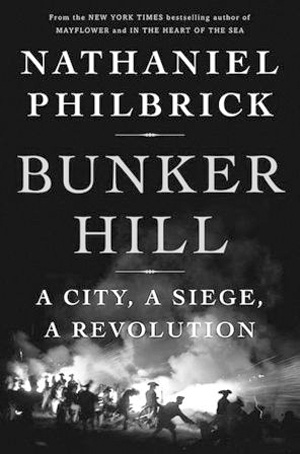 Bunker Hill: A City, a Siege, a Revolution by Nathaniel Philbrick, Viking Press, 416 pp., $32.95, hardcover. This is a summation of the beginning of the American Revolution, centered in Boston. From the Tea Party to Bunker Hill, Boston went from a simmering cauldron of discontent to the home of outright war.
Bunker Hill: A City, a Siege, a Revolution by Nathaniel Philbrick, Viking Press, 416 pp., $32.95, hardcover. This is a summation of the beginning of the American Revolution, centered in Boston. From the Tea Party to Bunker Hill, Boston went from a simmering cauldron of discontent to the home of outright war.
Return of a King: The Battle for Afghanistan, 1839-42 by William Dalrymple, Knopf Publishing Group, 560 pp., $30.00, hardcover. A detailed analysis of the First Anglo-Afghan War. The British invasion faced great hardship and difficulty but stubborn pride kept them in a fight that is controversial to this day.
The Wrath of Cochise: The Bascom Affair and the Origins of the Apache Wars by Terry Mort, Pegasus, 400 pp., $27.95, hardcover. The story of a kidnapping that precipitated the decades-long frontier war. The personalities and decisions of the major figures are scrutinized and placed in context with historical events.
F86 Sabre vs. MiG15: Korea 1950-53 by Doug Dildy, Osprey, 80 pp., $18.95, softcover. Osprey’s Duel Series visits the epic fight between these two aircraft in the skies over the Korean Peninsula. Technical and tactical information about these two classic fighters combine with analysis of their performance in action.
The Savior Generals: How Five Great Commanders Saved Wars That Were Lost—From Ancient Greece to Iraq by Victor Davis Hanson, Bloomsbury Press, 2013, 320 pp., notes, bibliography, index, $28.00, hardcover. An in-depth look at five Western generals: Themistocles, Belisarius, William Sherman, Matthew Ridgway, and David Petraeus and how they achieved victory in situations where defeat seemed all but assured.
The Battleship Builders: Constructing and Arming British Capital Ships by Ian Johnston and Ian Buxton, Naval Institute Press, 2013, 352 pp., photographs, index, $68.95, hardcover. With the advent of Dreadnought, the first all big-gun battleship, England had set a new standard for the world’s navies. How the nation built the Grand Fleet, larger than any other, is revealed here. It was a triumph of Britain’s industrial and technological ability.
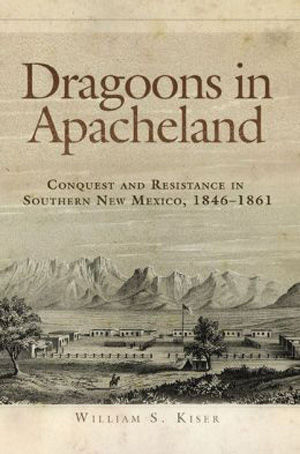 The Sleepwalkers: How Europe Went to War in 1914 by Christopher Clark, Harper, 2013, 736 pp., illustrations, maps, notes, index, $29.99, hardcover. A study of how Europe became embroiled in World War I. Rather than concentrating on the battles, the author looks at the alliances, relationships, and political maneuvering that led to the conflict.
The Sleepwalkers: How Europe Went to War in 1914 by Christopher Clark, Harper, 2013, 736 pp., illustrations, maps, notes, index, $29.99, hardcover. A study of how Europe became embroiled in World War I. Rather than concentrating on the battles, the author looks at the alliances, relationships, and political maneuvering that led to the conflict.
Gettysburg: The Last Invasion by Allen C. Guelzo, Knopf, 2013, 656 pp., notes, index, $35.00, hardcover. This is a new telling of the epic battle of the American Civil War. The story is told both from the point of view of the common soldier through to generals, politicians, and civilians inside Gettysburg itself. The author also assesses the battle through the military practices of the time.
Dragoons in Apacheland: Conquest and Resistance in Southern New Mexico, 1846-1861 by William S. Kiser, University of Oklahoma Press, 2013, 368 pp., illustrations, notes, bibliography, index, $29.95, hardcover. This book tells of the early fighting between the U.S. Army and the Apache tribes in New Mexico before the Civil War. Although the Apaches defended their land from encroachment, the Americans maneuvered for control of the territory. In the middle were two regiments of dragoons caught in a bitter contest of survival and expansion.
New York at War: Four Centuries of Combat, Fear, and Intrigue in Gotham by Steven H. Jaffe, Basic Books, 2013, 424 pp., illustrations, maps, notes, index, $29.99, hardcover. New York City has a long history of involvement in warfare. From the first fighting with Native Americans in 1609 to the Civil War draft riots to the attacks of September 11, 2001, New York has been intimately involved in America’s military history.
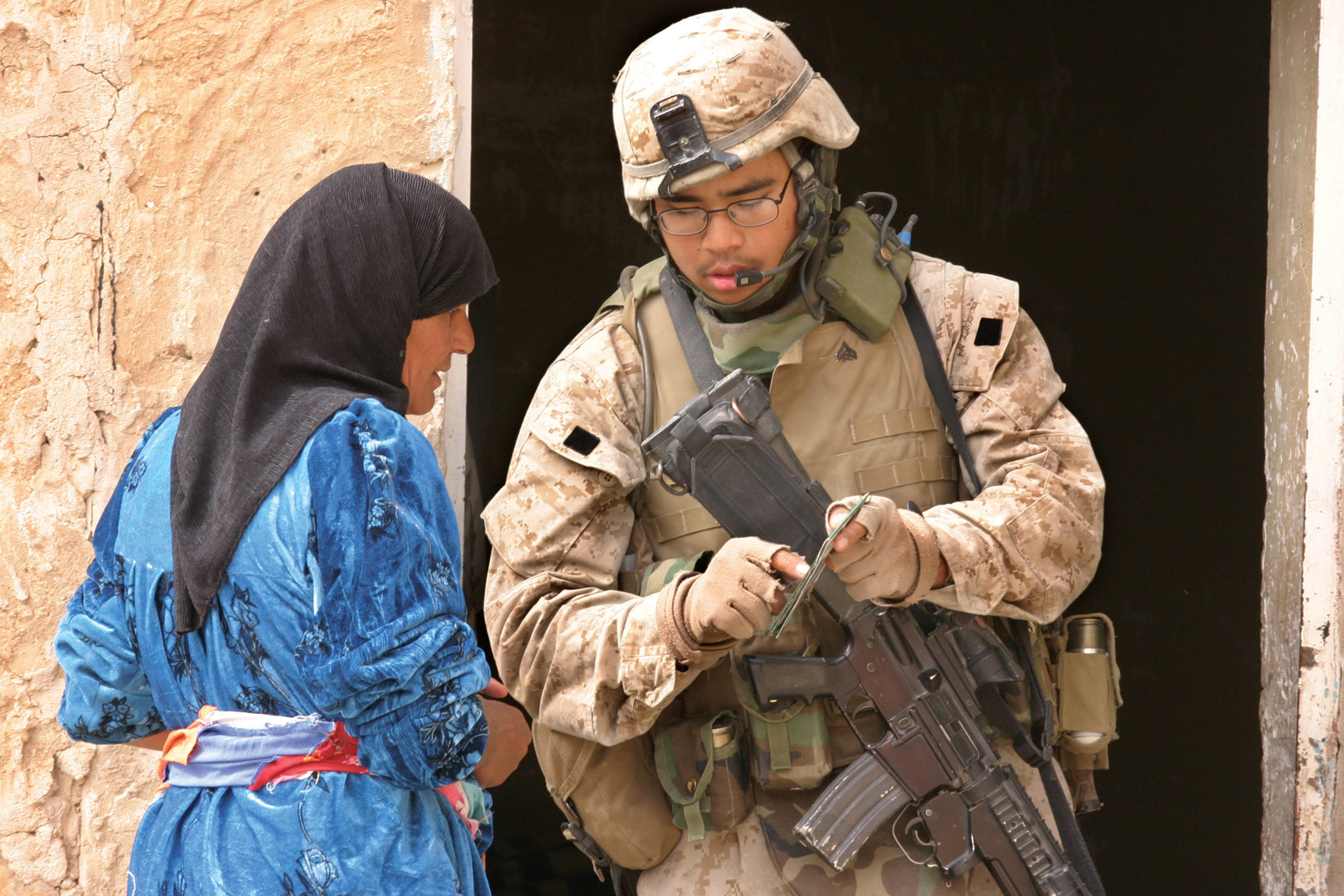
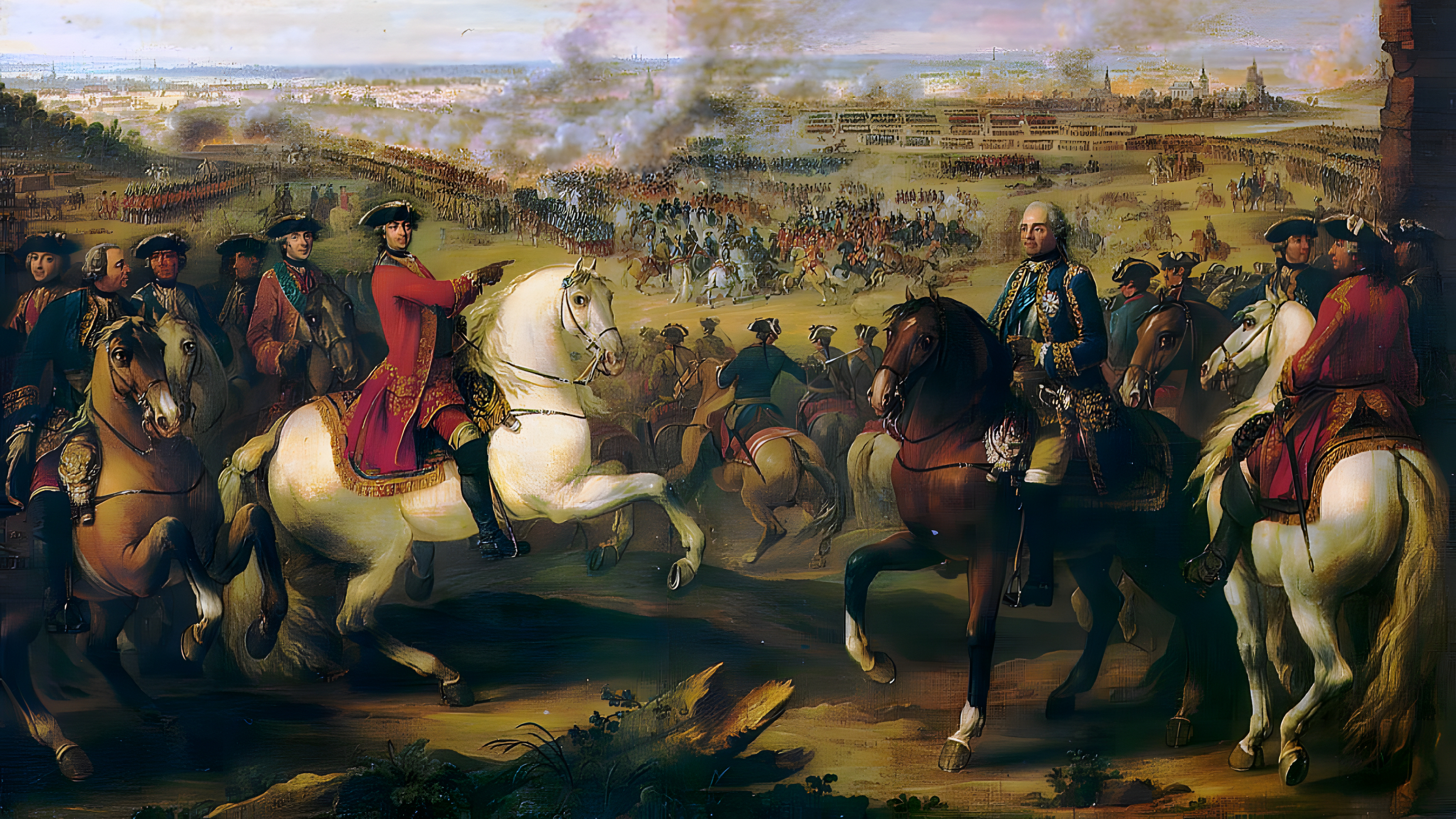
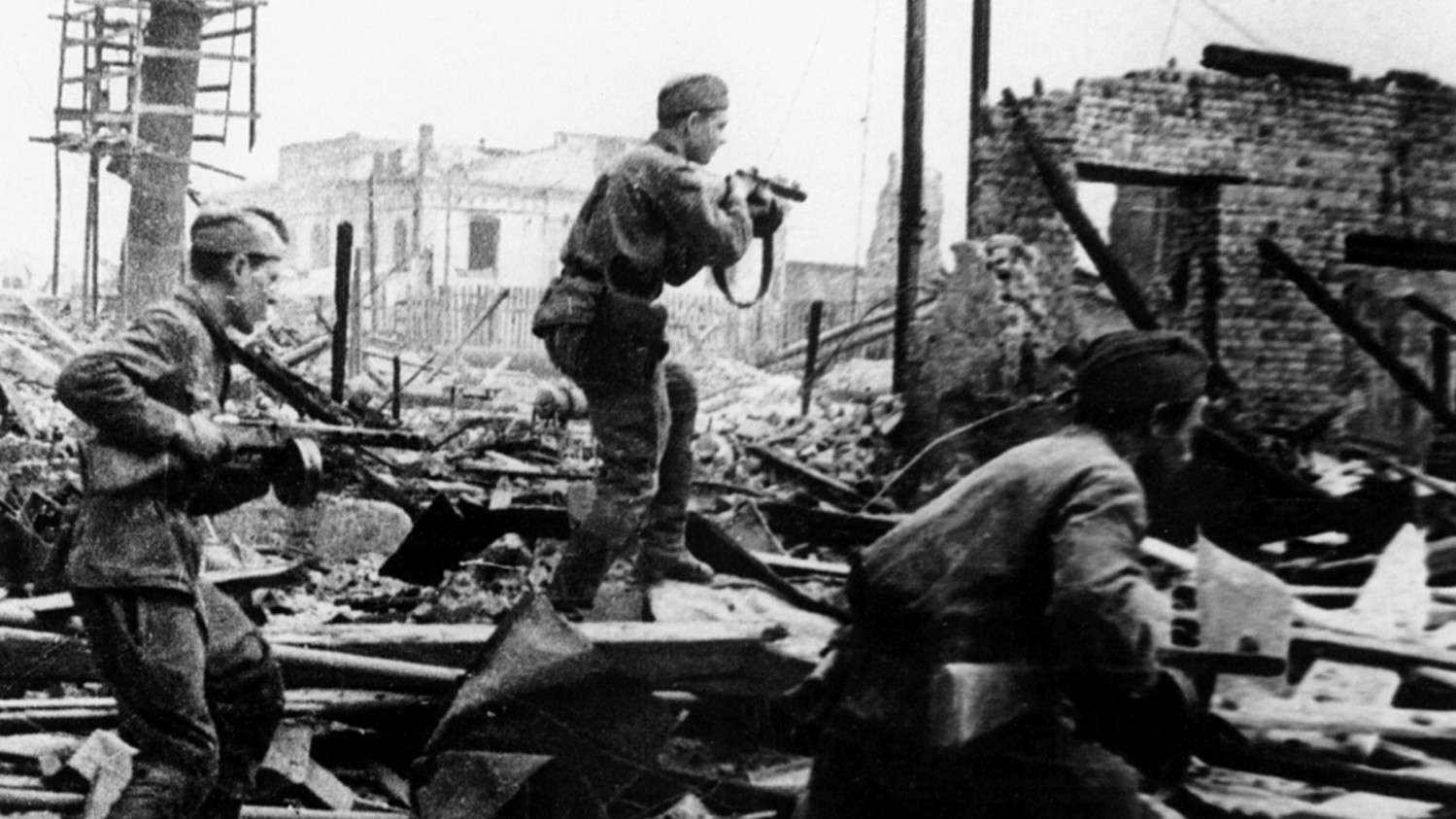
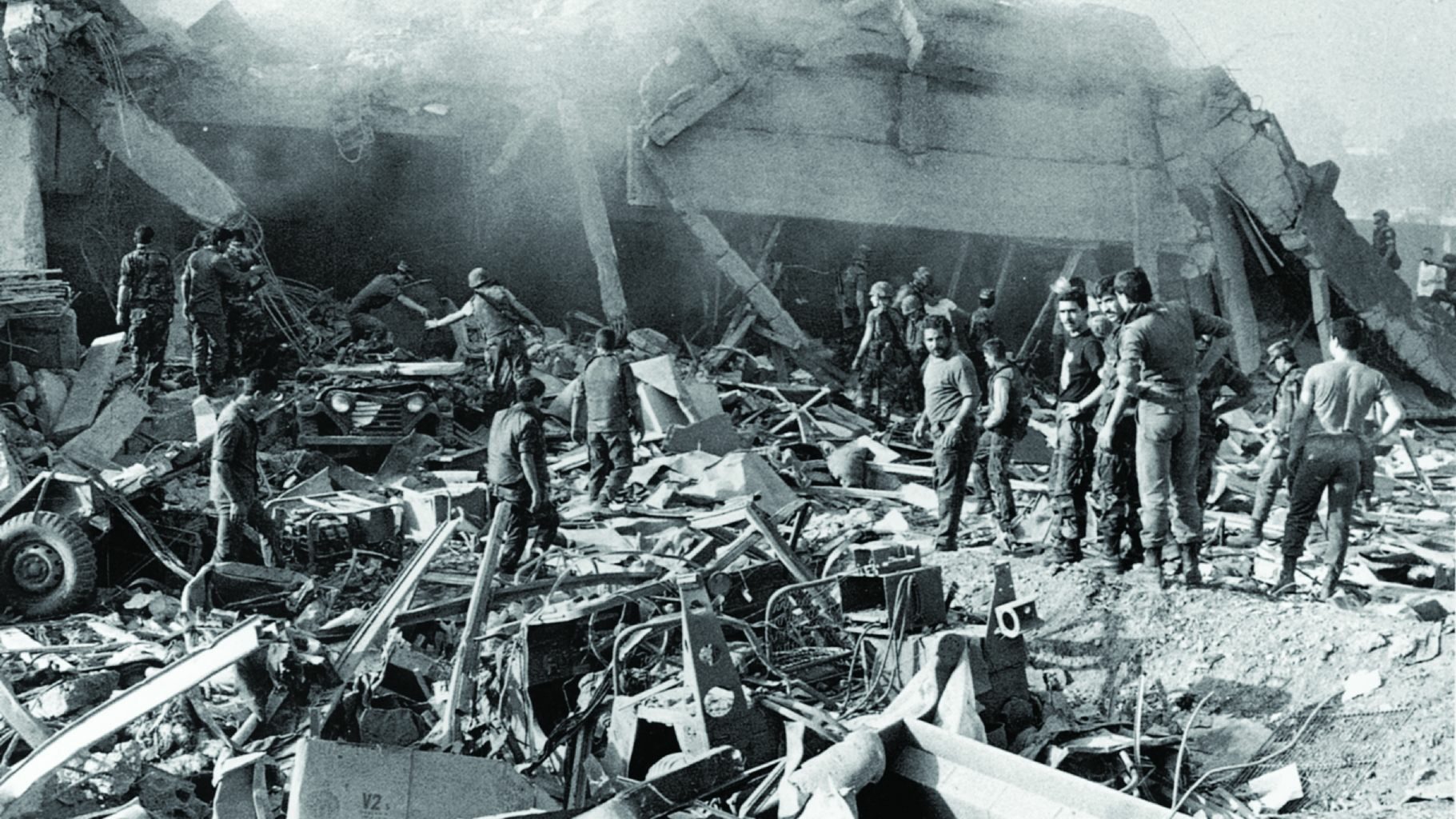
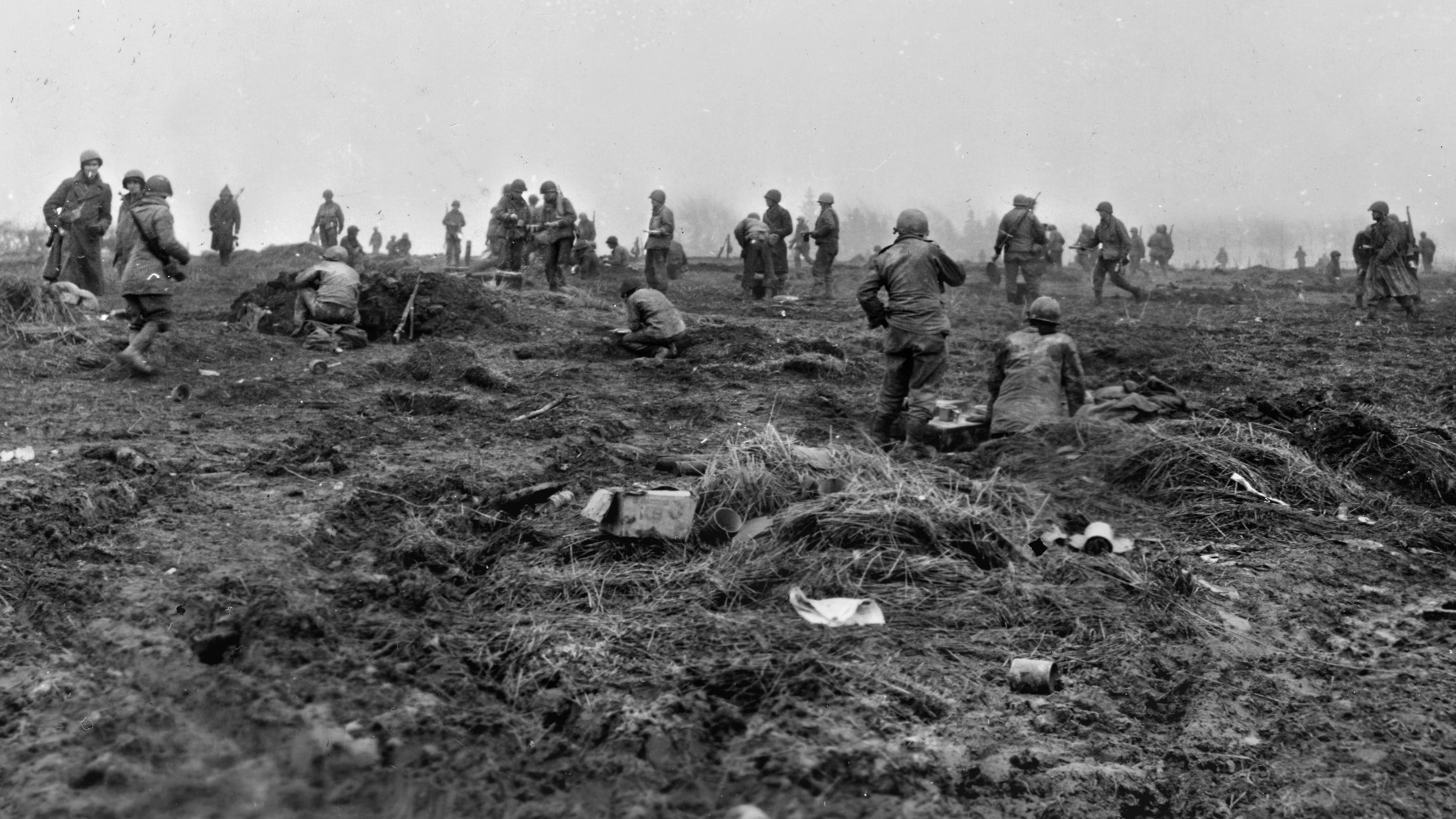
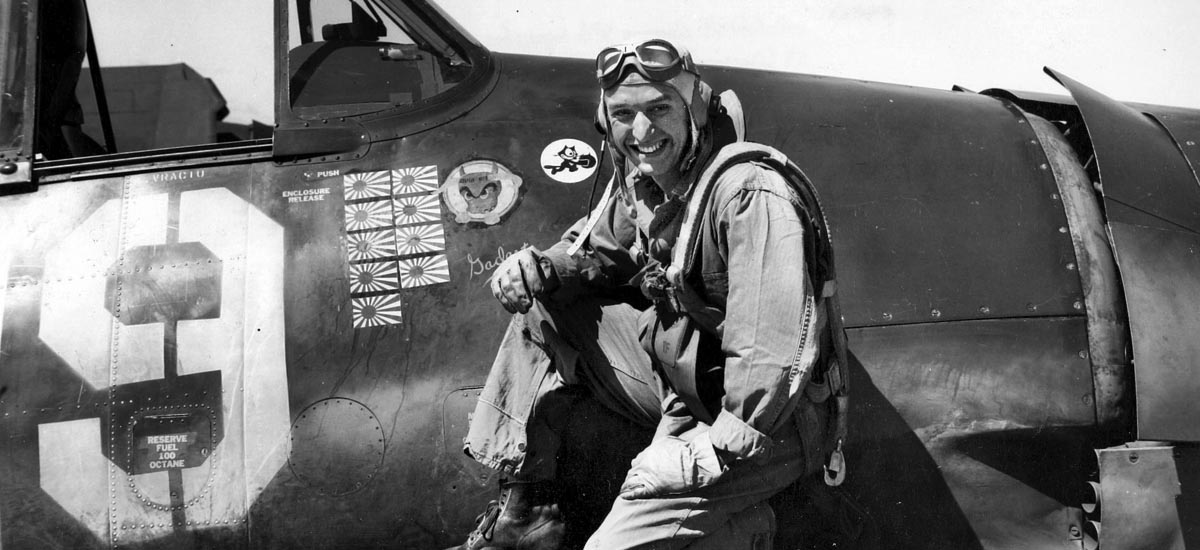
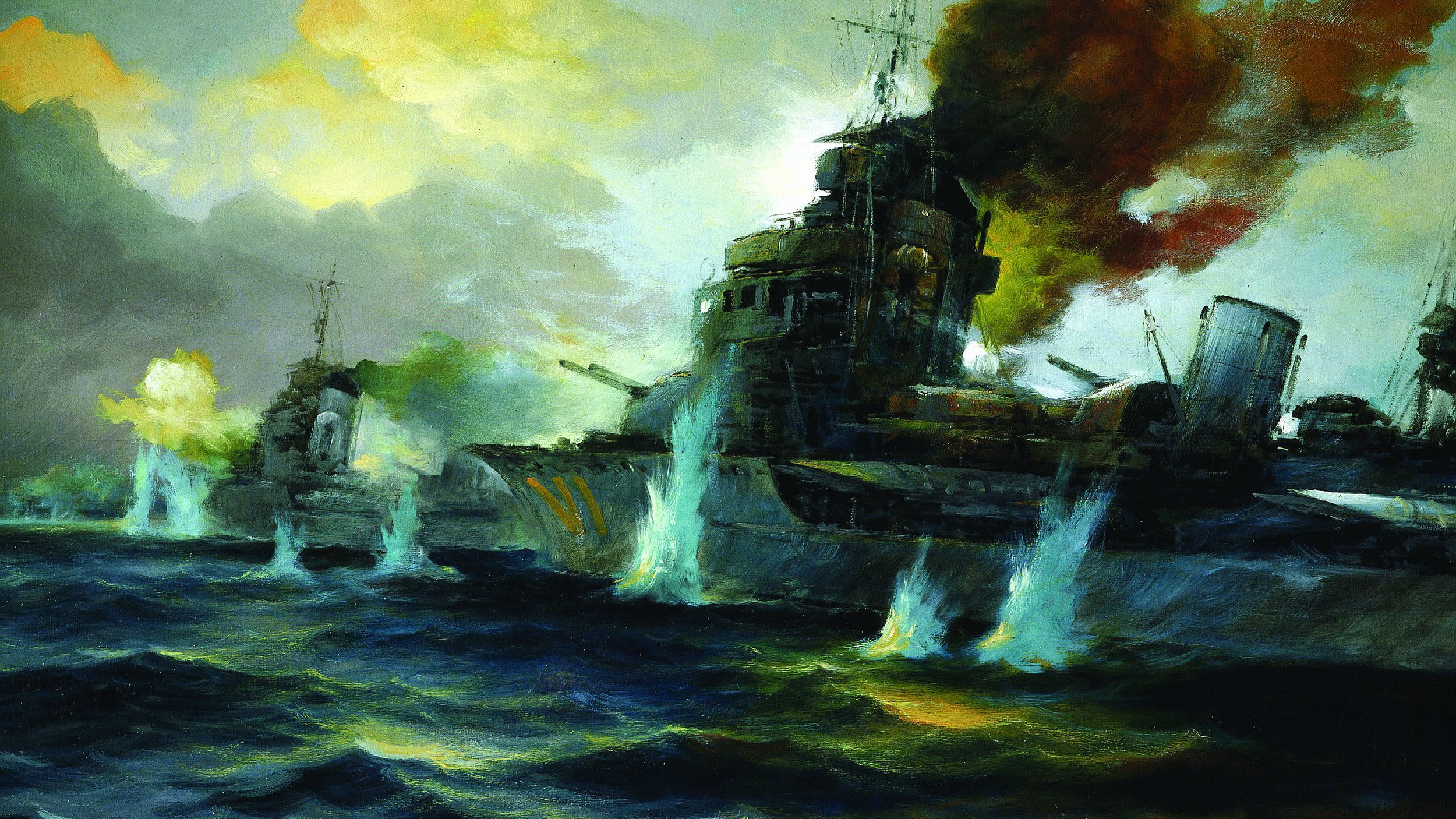
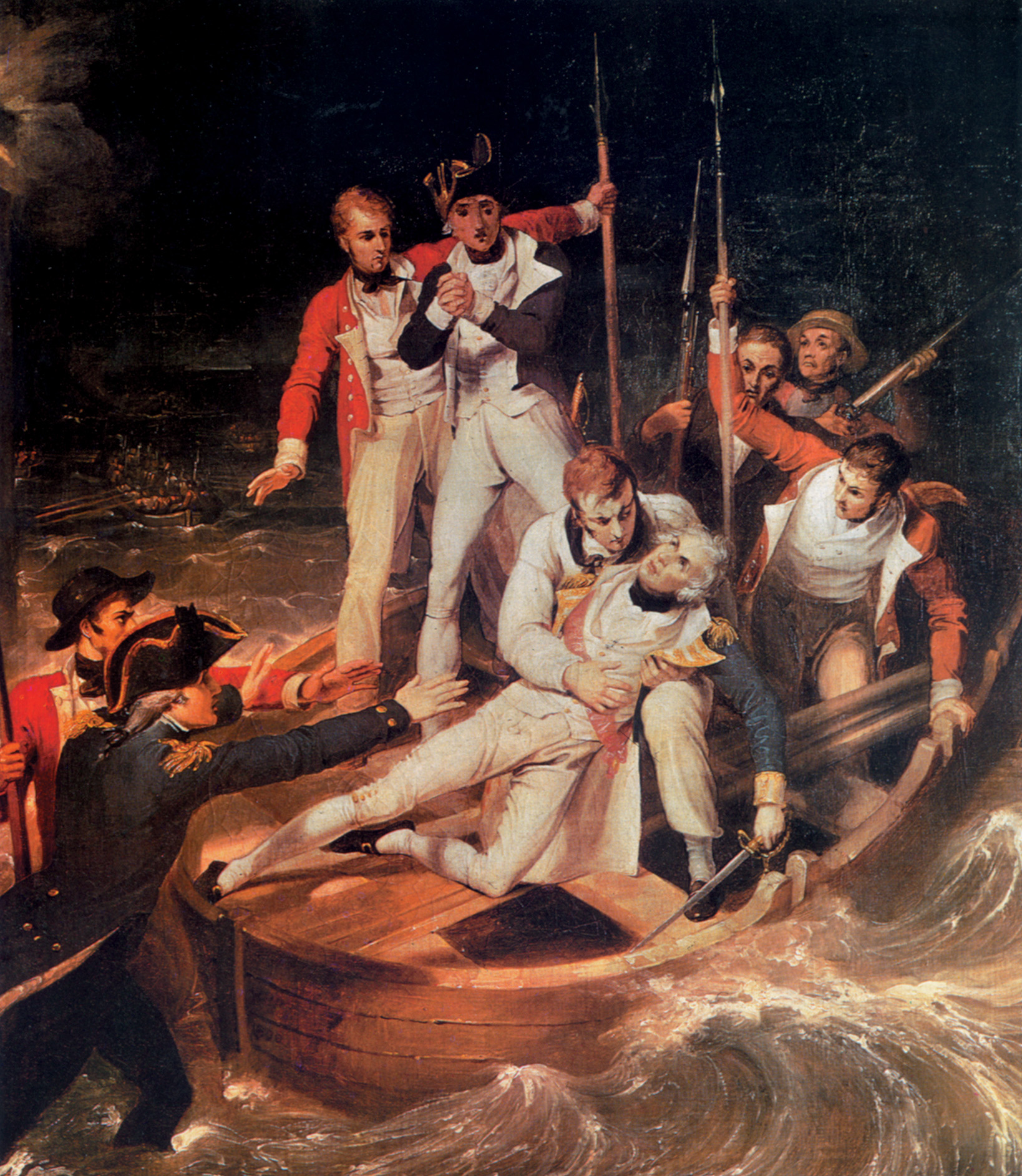
Join The Conversation
Comments
View All Comments